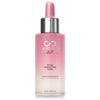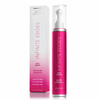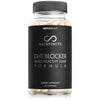
What Are the Four Stages of Hair Growth?
When it comes to hair growth and loss, the process involved may appear to be straightforward, however, it may be a little more complex. The hair growth cycle comprises four different stages, and each phase comes with its function and purpose.
In order to comprehend how hair develops and measures that can be taken to stop or cure premature hair loss, these phases of hair growth have been examined in considerable detail in this article.
During the first three stages of the hair cycle—anagen, catagen, and telogen— everything that has to do with the development and maturing of hair occurs, including the action of the hair follicles that give rise to every single hair strand. Exogen, or the last stage, is when "old" hair sheds, in which case new hair is usually prepared to replace it.
Age, diet, and general health may all have an impact on each phase's timetable. This indicates that there are certain measures that you can take to ensure that your hair goes through an excellent growth cycle along the way, and we will be discussing some of the measures later on in this article.
Now, let's discuss the four stages of the hair growth cycle in full detail.
Four Stages of Hair Growth
-
Anagen: Growing Phase
The anagen phase is the initial stage in the hair growth cycle. Lasting for a period of three to five years, this is the longest stage in the hair growth cycle. However, in some individuals, some hair strands can grow for as long as seven years or more.
Note that the anagen phase varies depending on the hair type. For instance, when compared to your scalp hairs, the anagen stage of pubic and brow hairs is substantially shorter.
Most of the hairs produced by the hair follicles during the anagen phase keep on growing unless they get trimmed or till when they reach the end of their shelf life and fall out. Approximately 90 percent of your hair is usually in its anagen phase.
-
Catagen: The Transition Phase
The catagen phase is the second stage of the hair growth cycle and it begins once the anagen phase comes to an end. It typically lasts for about ten days or more. Hair growth slows down throughout this phase as hair follicles shrink. Even when the hair leaves the base of the hair follicle, it stays in place for the duration of the last few days of growth.
-
Telogen: Resting Phase
Normally, the telogen period lasts for about three months. Approximately 10 to 15 percent of the hairs on your scalp are in the telogen stage.
When in the telogen phase, there is no hair growth and neither does the hair fall out. At this stage, follicles that have recently shed their hair during the catagen stage begin to create new hairs.
Although several scientists have separated this period into the telogen and exogen phases, some health professionals still refer to the telogen phase as the shedding phase.
-
Exogen: Shedding Phase
In essence, the exogen stage of hair growth is a continuation of or an aspect of the telogen stage. This phase of hair growth is often characterized by the shedding of hair from the scalp which is often aided by combing and washing of the hair. On average, 50 to 100 hair strands are lost every day during the shedding phase.
New hairs are sprouting in the follicle at the same time as old ones shed during the exogen phase, which may continue from 2 to 5 months.
Factors Influencing Hair Growth Cycles
Each person is unique, and genetics, age, stress, and several environmental variables all have an impact on our hair growth cycle. Our hair follicles deteriorate with age.
As we age, each follicle's stem cells and the potential of the hair cycle to regenerate also decline. In other words, there aren't as many hair follicles in the anagen phase, which implies fewer hairs are being produced to replace those that fall off naturally.
Telogen effluvium, another name for stress-induced hair loss, usually arises when one undergoes physical or psychological severe stress. Such a condition leads to widespread hair loss, which is opposed to androgenetic alopecia or male pattern baldness known for causing a receding hairline and thinning at the head top.
Environmental factors might also affect hair growth and thinning. For instance, accumulation of smoke and dust can all lead to scalp and skin irritation, and also dandruff. Disruption of the hair growth cycle, as well as hair loss, can arise from each of these factors.
As a result of these several diverse factors contributing to hair loss, your body's reaction throughout the hair growth phase may not be swift enough to generate anagen hair in place of the lost hairs, leading to thinning hair or total baldness.
Effects of the Hair Growth Cycle Disruption
The growth cycle of each follicle is autonomous with each of them undergoing a unique growth cycle at different periods. This variance in the growth cycle of each follicle ensures that all your hairs don't fall off at the same time. Rather, only a portion of the hairs from the range of 80 to 100 hairs are lost in a day for every healthy head of hair.
Any disruption to the normal hair growth cycle can lead to hair thinning, hair loss, and other issues. Several conditions like metabolic imbalances, stress, sickness, and poor diet may all lead to this disruption.
Telogen effluvium, for example, may occur 12 weeks after a severe fever or a restricted diet has been implemented. This condition results when the anagen phase fails to complete its cycle and most of the hairs get to the telogen stage at once - leading to an increased amount of hair fall when the hair gets to the exogen phase in about three months.
It may be difficult for your hair to grow as thick and long as it usually does if the hair growth cycle is continuously disrupted due to a lack of proper nutrients, stress, or health conditions. The reason is that your hair is never given the required amount of time it should stay in the anagen phase for it to reach the needed length.
Hair Growth Cycles and Male Pattern Baldness
About 42 percent of men have male pattern baldness at some time in their life, making it the most prevalent kind of hair loss among males.
This condition is caused when Dihydrotestosterone (DHT), an androgen hormone, shrinks the hair follicles on your head and ultimately causes them to cease growing new hair. As a result, even though your hair is still undergoing its typical cycle of catagen and telogen stages, it isn't producing as much hair as it formerly did during the anagen phase. There is no longer a replacement for the hairs that are being lost.
Fortunately, male pattern baldness is curable. DHT levels in the body may be reduced with the aid of a prescription drug known as finasteride, an oral pill that is taken daily. Androgenetic alopecia-related hair loss may be prevented with decreased DHT levels.
The topical medication minoxidil is often recommended together with finasteride pills. In order to promote blood and nutrient flow and aid in the growth of new hair, minoxidil works by relaxing the blood vessels in your scalp. Finasteride and minoxidil are a very efficient combination for treating hair loss and regeneration.
If a more natural approach is desired, Hairfinity DHT Blocker features Saw Palmetto, a powerful DHT blocker, clinically proven to help stop hair loss and promote hair regrowth. It also includes Biotin which promotes the growth and maintenance of existing hair. These hair loss prevention vitamins are safe and effective for men and women.
How to Maintain Hair Health During All Four Stages
Genetics and hormone levels, which are mostly out of your control, are important for having healthier, fuller hair. Additionally, there are controllable aspects associated with a healthy lifestyle and hair care regimen. For each of the four phases, some of the most effective tactics are:
-
Good Nutrition
It's essential to consume proper nutrients, especially proteins because the hair is composed mostly of protein. Some good sources of protein include:
- Beans
- Legumes
- Lean Meats
- Low-fat Dairy Products
- Fish
In addition, studies have also shown that the following underlisted nutrients when taken in the right proportion can also aid in excellent hair growth:
- Iron
- Vitamin D
- Vitamin C
- Vitamin B12, folic acid, and zinc are all good for promoting healthy hair growth.
-
Drink Enough Water
Drinking water helps you achieve your goal of growing excellent, healthy hair in addition to ensuring that your body systems operate properly. The abundance of vitamins and minerals in water is very essential for your body and is exactly what your hair needs.
Also, since natural hair constantly yearns for moisture, it'll be easy for you to hydrate your strands from the inside out to get more lovely hair when you take enough water.
-
Choose the Right Hair Care Products
Whether you're dealing with thinning or hair loss, you'll get the best out of whatever stage your hair is in if you use products that are tailored to your unique requirements.
-
Reduce Stress
Severe stress has been linked to several hair loss issues. Different research has shown that there are about three different hair loss conditions linked to severe stress. They are:
- Telogen Effluvium: This disorder speeds up the transition of hair from the anagen to the telogen and finally exogen phases, thereby leading to excessive daily hair loss.
- Trichotillomania: Trichotillomania is a psychological disorder that results in an overwhelming impulse to pluck hair from your scalp or other parts of your body.
- Alopecia Areata: The immune system of the body assaults healthy hair follicles in this disorder, resulting in hair loss.
Relaxation practices such as yoga and meditation as well as avoiding some of the everyday stresses in your life may aid in reducing stress, which can have a beneficial impact on your overall health.
-
Proper Hair Care
Selecting the proper shampoo is the first step in healthy hair maintenance. Find the right products made for your particular hair type, whether it is dry, fine, colored, greasy, or any combination of these.
When it comes to the perfect conditioner, it may take some experimentation to locate the correct products. Always take note of how different shampoos and conditioners affect the appearance and overall health of your hair.
To encourage healthy growth, it's also crucial to treat your hair carefully. When shampooing, stay away from using excessively hot water, and gently towel-dry your hair after you've finished. When hair is damp, it is more susceptible to damage. When drying your hair, lowering the heat could also help.
Takeaway
Anagen, catagen, telogen, and exogen are the four stages of hair growth, and each phase has its own distinct durations and functions.
Long-term healthy hair development needs to be supported by a healthy lifestyle that includes minimal stress, a balanced diet, and gentle hair care.
Consult a doctor if you think you're losing your hair more quickly than is normal. Treating any underlying issue that's interfering with the normal hair growth cycle as soon as possible may help decrease hair loss and retain the good hair you still have.






























